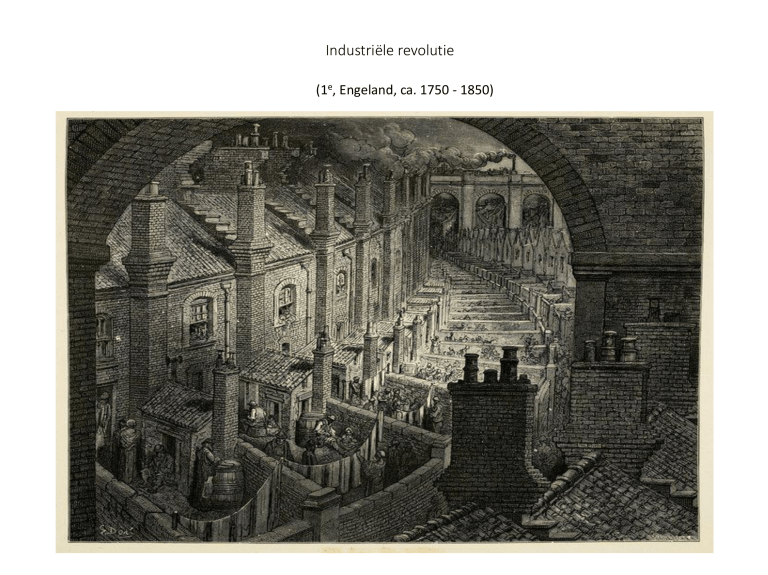
Industriële revolutie
(1e, Engeland, ca. 1750 - 1850)
Belang:
oBasis latere en huidige welvaart
oParadoxaal: beeld van armoede en uitbuiting
oModel economische ontwikkeling en groei, vooral na 1945
Wat gaan we doen:
1.Situering: wat is het en wat is het belang?
2.Wie betaalde het gelag
3.Hoe kwam het (daar en toen)?
Steeds: aandacht voor:
ovisies contemporaine economische wetenschap
ovisies en onderzoek nu en
ovisie OS
The Great Divergence
Nieuwe Woonstandaarden
Hayek (ed.), Capitalism and the Historians:
Ontdekkingsreizen/ handelsnetwerk ca 1500 - 1600
Landbouwproductiviteit
Cours van Negotie
Hayek (ed.), Capitalism and the Historians
Mises, Human Action, 1966
every single act of wealth production “is based on the saving and…preparatory
work of earlier generations. We are the lucky heirs of our fathers and
forefathers whose saving has accumulated the capital goods with…which we
are working today. We are better off than earlier generations because we are
equipped with the capital goods they have accumulated for us.”
Vermogen in Nederlandse industrie:
1850
50.000 pk
Windmolens
1890
80.000 pk
Windmolens + stoommachines
1930
2.000.000 pk
Stoommachines, elektriciteit,
verbrandingsmotoren
1950
4.500.000 pk
Stoommachines, elektriciteit,
verbrandingsmotoren
2000
45 – 50.000.000 pk
Elektriciteit, verbrandingsmotoren
• TED-video toaster, 11:21:
•
• https://www.youtube.com/watch?v=5ODzO7Lz_pw
•
• Kenian airbus, 3:27:
• https://www.youtube.com/watch?v=SVqQKF7xgTQ
•
• ook boodschap van klassieke essay ‘I, pencil’ van Leonard Read van
FEE
•
• http://ipencilmovie.org/
